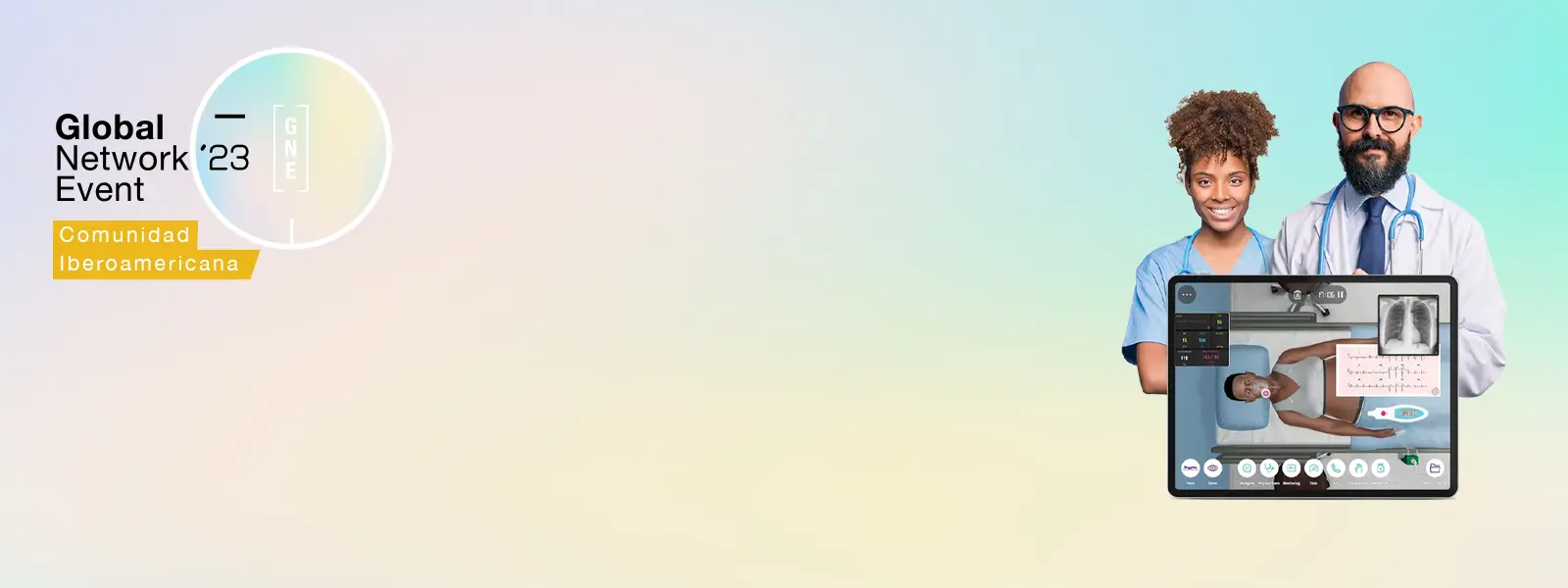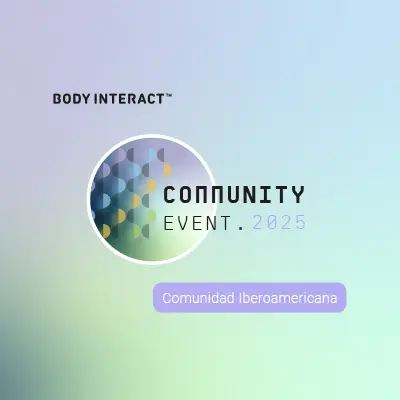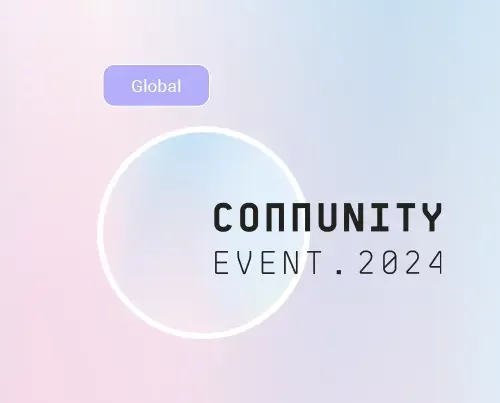Global Network Event - Annual event on Virtual Patients for the Iberoamerican Community (Part I)
On the 15th of November, experts from the Iberoamerican Community joined to share their thoughts, experiences, good practices on the usage of Body Interact Virtual Patients in healthcare-based curricula.
This event brought to light perspectives on how Virtual Patients can be used as a teaching tool, accross different stages of the curriculum, to train clinical skills, decision-making skills, and in conjugation with different teaching approaches suh as Problem-Based Learning.
On the video below you will find the overall presentation of the Global Network – Iberoamerican Community ‘23, and following it, you will find a closer look at each of the speakers presentations.
Speakers Presentations
Coming from Mexico, Professor Josefina Serrano, is a surgeon, with expertise in emergency medine and clinical simulation. Professor and head of the simulation center at the Faculty of Medicine, at La Salle University, in Mexico.
The main goal fo Professor Josefina Serrano presentation was to explore a method to implement Virtual Patients to teach clinical competency to medical students.
Watch the professor´s presentation
To start with, Professor Josefina Serrano, explored the concept of Virtual Patient and clinical competency.
- The definition introduced was the one from the Society of Simulation in Healthcare (SSH). And what is a Virtual Patient in the eyes of SSH?
«A computer program that simulates real-life clinical scenarios in which the learner acts as a health care provider obtaining a history and physical exam, and making diagnostic and therapeutic decisions»
SSH, 2020
Professora Josefina, furthermore adds the idea of safe environment. Safe environment for students to parctice decision-making and for the patient.
- And what is clinical competency?
«..the habitual and judicious use of communication, knowledge, technical skills, clinical reasoning, emotions, values, and reflection in daily practice for the benefit of the individual and community being served.»
Epstein, 2002
Clinical competency is clearly a complex and multidimension concept, for which the development is best served by the use of different teaching methods and tools such as simulation, and in particular, Virtual Patients.
- Virtual Patients to train clinical competency:
In order to make the best out of the use of Virtual Patients, Professor Josefina Serrano, highlights the importance of the curriculum design in which the different steps will be taken in account.
This curriculum design has to consider the curricular integration, the training of all of the users regarding the Virtual Patient software, the implementation, the quantitative evaluation, qualitative evaluation, and adjustments made to the implementation.
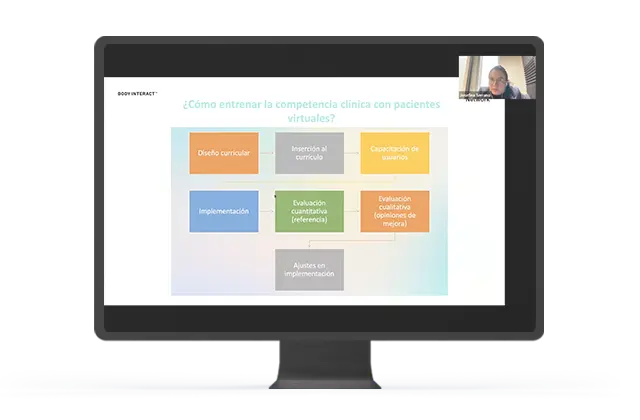
- Follow a curricular design;
- Align the curricular integration with the curricular unit that combines different learning strategies, as an example, the Professor mentions her own experience in which Problem-Based Learning and Simulation-Based Learning are combined;
- Define learning goals and outcomes;
- Select the virtual patient scenario tuned to the defined learning goal
- Provide proper debriefing and feedback
- Evaluate the curricular program and implementation
- Compare outcomes – Clinical competency managing the Virtual patient vs. Real performance
As major advantages of implementing Virtual Patients into the curriculum, the Professor calls the attention to the existing feedback provided by the software, the range of scenarios available for multiple activities, the storage of users progress, the simulation scoring, the possibility to promote team work abilities, the possibility to promote individual learning, the ability to used the software remotely and online, and the easiness to use the software.
In sum, Professor Josefina Serrano, recognizes Virtual Patients as a relevant tool to develop reasoning skills essential to master clinical competency, namely clinical judgement, problem solving and decision-making skills.
Doctor in Nuclear Medicine, Master in Medical Education, CHSE-A Instructor of Simulation, and the President of the Chilean Society of Clinical Simulation and Patient Safety, from Chile, we welcomed Professor Soledad Armijo next.
Focusing on synchronous and asynchronous practice with Virtual Patients, we believe you will find the outcomes highlighted by Professor Soledad Armijo very interesting.
Explore more
Professor Soledad started by questioning what are the critical features toget the students prepared with success to address the real world.
Medical schools, nowadays, are preparing professionals that have multiples responsibilities: make clinical decisions, work in teams, make his/her practice centered on the patients in the better way possible, applying technologies to guide decisions, all of this in an ethical approach.
So it is clear that doctors are professionals with different dimensions that compete to the role of healthcare provider.
Simulación has cemented its place in clinical teaching and training. This can be seen in the different researches presented by Professor Soledad.
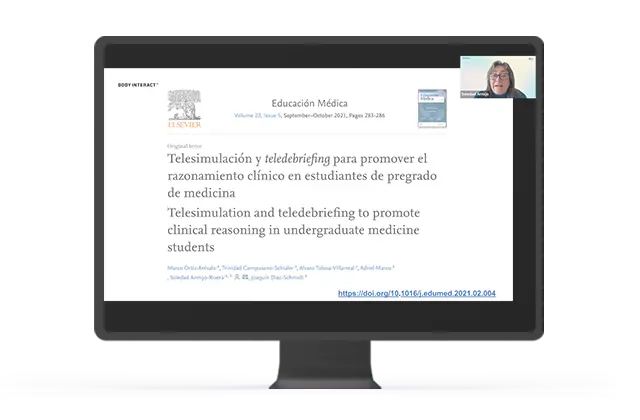
The first paper shows that students accept simulation modalities, such as virtual patients, as a teaching-learning strategy.
The benefits of introducing virtual patients in the beginning of the curriculum was what another of the researches aimed to assess. The conclusions of this research shows not only that the virtual simulation implementation, with instructor-guided debriefing improved competencies for the initial management of stroke, in undergraduate medical students, and also that the experience was highly valued by the students.
Lastly, what Professor Soledad Armijo aimed to discuss was if there were any differences in the applied modalities of feedback. This research, currently under revision for publication, studied the outcomes of two groups, for the same set of cases. One of the groups received synchronous feedback from a neurologist and the other group did the same virtual scenarios in a standalone manner. What they found was that either synchronous or asynchronous feedback produced an improvement in students outcomes, without any significant differences between both groups regarding knowledge and performance.
To the constraints and difficulties found by the researches mentioned, Professor Soledad Armijo suggested that:
- Scenarios are well analyzed
- Choose scenarios that are useful for attaining the select learning goals
- Use a set of scenarios correlated with the same health issue
- Foster asynchronic practice with automatic feedback
- Combine the implementation with some syncronic simulation, guided by the instructor, with the intention to ‘hook’ students to the methodology
Look into Professors Armijo presentation and the papers mentioned:
